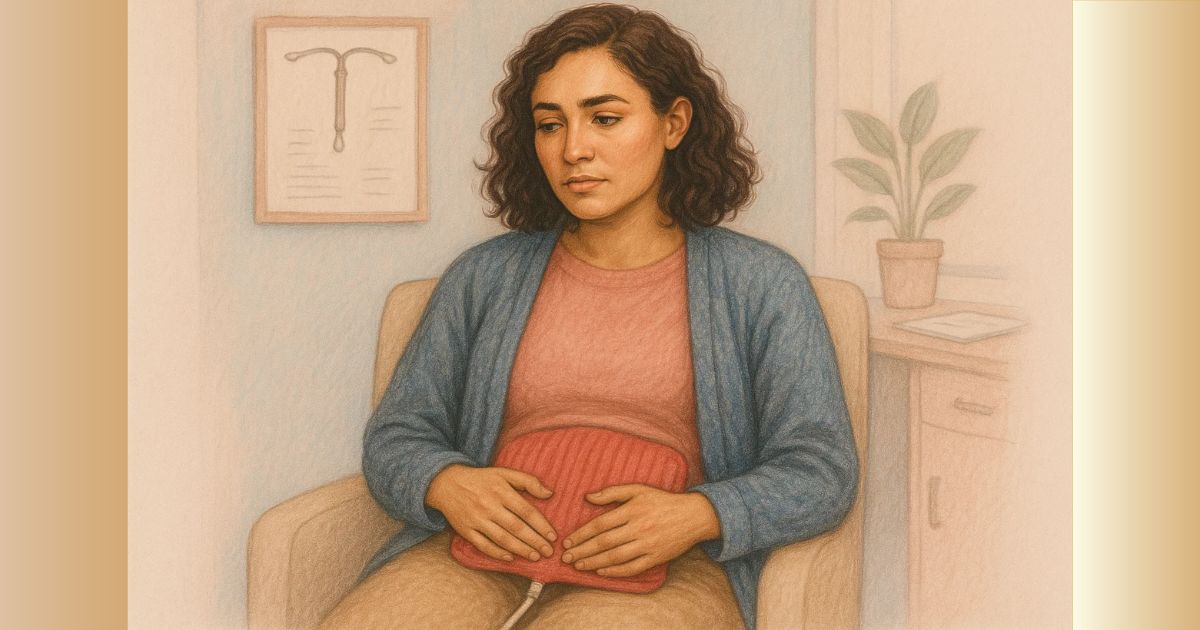Hey there! If you’re reading this, chances are you’ve heard about intrauterine devices (IUDs) and are curious about their benefits, their downsides, or maybe you’ve experienced some discomfort yourself. IUDs are often praised as a highly effective, low-maintenance form of birth control, but there’s a side to the story that doesn’t get enough airtime: the pain they can cause and why so many women feel like their experiences are brushed under the rug. In this post, I’m diving deep into why IUDs can hurt so much, the physical and emotional toll they take, and why this issue isn’t getting the attention it deserves. Let’s have an honest, open conversation about IUDs, because you deserve the full picture.
What Is an IUD, and Why Is It So Popular?
An IUD is a small, T-shaped device that a healthcare provider inserts into your uterus to prevent pregnancy. It’s one of the most effective forms of contraception out there, with a failure rate of less than 1%. There are two main types: hormonal IUDs (like Mirena, Kyleena, Liletta, and Skyla), which release progestin to prevent pregnancy, and non-hormonal copper IUDs (like Paragard), which use copper to create an environment that’s toxic to sperm. Depending on the brand, IUDs can last anywhere from 3 to 12 years, making them a convenient, long-term option for women who want reliable birth control without daily effort.
IUDs have skyrocketed in popularity over the past couple of decades. In the U.S., usage among women aged 15–44 jumped from about 1% in 1995 to nearly 10% by 2017. Why? They’re incredibly effective, reversible, and require no daily maintenance—no remembering to take a pill or worrying about condoms. Plus, hormonal IUDs can lighten periods or even stop them entirely, which is a huge draw for women with heavy or painful menstruation. For some, IUDs are a literal lifesaver, helping manage conditions like endometriosis or anemia by reducing heavy bleeding. But while the benefits are real, the pain and complications associated with IUDs are often downplayed, leaving many women unprepared for what they might face.
Recommended Read
Why Does IUD Insertion Hurt So Much?
Let’s get to the heart of it: IUD insertion can be painful. For some women, it’s a mild discomfort, but for others, it’s an intense, even traumatic experience. So, why does it hurt so much? The answer lies in the procedure itself and the unique sensitivities of every woman’s body.
The Insertion Process: A Step-by-Step Look
IUD insertion typically takes just a few minutes, but those minutes can feel like an eternity for some. Here’s what happens:
- Pelvic Exam: Your doctor uses a speculum to open the vagina and access the cervix, similar to a pap smear. This can feel uncomfortable, especially if you’re tense or have a sensitive cervix.
- Cervical Stabilization: A tool called a tenaculum, which looks like a pair of sharp forceps, is used to grasp and hold the cervix steady. This step alone can cause sharp pain or pinching because the cervix is packed with nerves.
- Uterine Measurement: The doctor inserts a thin instrument to measure the depth of your uterus. This can trigger intense cramping as the uterus is sensitive to manipulation.
- IUD Placement: The IUD is inserted through the cervix into the uterus using a narrow tube. This step often causes the most pain, as the uterus contracts in response to the foreign object.
The pain varies widely from person to person. Factors like whether you’ve given birth (nulliparous women often report more pain), your pain tolerance, and even anxiety levels can influence how it feels. For some, it’s a quick cramp like a bad period. For others, it’s excruciating, with reports of women passing out or feeling like their “heart almost bursted out of [their] chest”. The unpredictability is part of the problem—no one can tell you exactly how it’ll feel, and that uncertainty can make the experience even scarier.
Why the Pain Persists Post-Insertion
The pain doesn’t always end with the procedure. After insertion, many women experience cramping and spotting for days, weeks, or even months as the body adjusts to the IUD. This is often described as the uterus being “annoyed” by its new guest. For hormonal IUDs, irregular bleeding or spotting can last up to six months, while copper IUDs may cause heavier, crampier periods, especially in the first three to six months. These ongoing symptoms can feel relentless, especially if you weren’t warned about them upfront.
In rare cases, complications like expulsion (the IUD partially or fully coming out) or perforation (the IUD poking through the uterine wall) can cause significant pain. Expulsion happens in about 2–10% of users, particularly in the first year, and is more common in women who’ve recently given birth. Perforation is even rarer, occurring in less than 0.5% of cases, but it can lead to severe abdominal pain and requires medical attention. These complications, while uncommon, add to the fear and frustration some women feel when their pain isn’t taken seriously.
The Emotional and Physical Toll of IUD Pain
The pain of IUD insertion and its aftermath isn’t just physical—it can take a real emotional toll. Imagine going into a procedure expecting “mild discomfort” (as it’s often described) only to feel intense pain that leaves you shaken. Social media platforms like TikTok have become a space where women share raw, unfiltered stories of their IUD experiences, from cramping and bleeding to fainting in the exam room. These stories resonate because they validate what many women feel but aren’t always heard: that the pain can be overwhelming and the lack of preparation makes it worse.
For some, the pain triggers anxiety or even trauma, especially for those with a history of sexual trauma or negative medical experiences. The lack of adequate pain management can make women feel dismissed or gaslit, as though their pain is “just in their head.” One woman shared on X that her IUD insertion was so painful it changed her life, vowing never to go through it again. Others report feeling betrayed by healthcare providers who downplayed the procedure, offering little more than “take some ibuprofen” as advice.
Physically, the side effects can disrupt daily life. Cramps and heavy bleeding can make it hard to work, exercise, or even get out of bed. Hormonal IUDs may cause headaches, nausea, breast soreness, or mood changes, while copper IUDs can worsen menstrual pain. In rare cases, women develop ovarian cysts (about 1 in 10 in the first year), which can cause bloating or pelvic pain. These symptoms can feel like a betrayal of the “easy and carefree” promise of IUDs, leaving women questioning whether it’s worth it.
Why Isn’t IUD Pain Talked About More?
So, why does it feel like no one is addressing the pain associated with IUDs? There are a few reasons, and they’re rooted in both systemic issues and societal attitudes.
1. Historical Dismissal of Women’s Pain
Medicine has a long history of underestimating or dismissing women’s pain, especially when it comes to reproductive health. Studies show that providers often underestimate the pain of IUD insertion, assuming it’s tolerable because it’s “just a quick procedure”. This attitude stems from a broader pattern where women’s health concerns are taken less seriously than men’s. For example, women are more likely to have their pain attributed to psychological factors or told to “tough it out”. This systemic bias leaves many women feeling unheard when they try to discuss their IUD pain.
2. Lack of Research on Pain Management
There’s a surprising lack of research on effective pain management for IUD insertion. The CDC updated its guidelines in August 2024 to recommend counseling patients on pain management options before the procedure, but the options are limited. Topical or injectable lidocaine can help with cervical pain, but it doesn’t address the uterine cramping that many women find most intense. Over-the-counter drugs like ibuprofen have been shown to be largely ineffective for IUD insertion pain, yet they’re still commonly recommended. More advanced options, like conscious sedation or paracervical blocks, aren’t widely offered, especially in underserved areas.
The lack of research isn’t just about pain management—it’s about women’s health in general. One X user shared frustration with her gynecologist, who admitted there was “almost zero research” on how conditions like PMDD interact with other health issues, highlighting the broader gap in women’s healthcare research. Without robust studies, doctors are left with a “limited toolbox” to address IUD pain, leaving women to bear the brunt.
3. Social Media vs. Medical Narratives
Social media has been a double-edged sword. Platforms like TikTok have given women a space to share their IUD experiences, creating a sense of community and validation. Videos tagged #IUD often highlight the pain and lack of informed consent, with some women filming their reactions during insertion to show just how intense it can be. These stories have pushed organizations like the American College of Obstetricians and Gynecologists (ACOG) to update their guidelines, acknowledging the need for better pain management and counseling.
But there’s a catch: some providers dismiss these social media stories as “low-quality” information or fear-mongering, arguing that they exaggerate the pain. This creates a disconnect—women feel their experiences are being invalidated, while doctors worry that negative stories deter others from choosing IUDs. The truth is, both sides have a point. Social media can amplify worst-case scenarios, but it’s also shining a light on a real issue that the medical community has been slow to address.
4. Systemic Barriers and Inequities
Access to pain management varies widely, especially for marginalized groups. Women in underserved areas may have fewer options for pain relief due to limited resources or access to specialized care. Discrimination in healthcare can also play a role—some women report feeling coerced into procedures or having their pain concerns ignored, particularly if they’re from marginalized communities. The lack of standardized pain management protocols means that care depends heavily on the provider, leading to inconsistent experiences.
Managing IUD Pain: What Can You Do?
If you’re considering an IUD or already have one and are struggling with pain, here are some practical steps to manage discomfort and advocate for yourself:
- Before Insertion: Talk to your doctor about pain management options. Ask about lidocaine (topical or injectable), anti-anxiety meds, or even sedation if you have a history of trauma. Be upfront about your concerns—shared decision-making is key.
- During Insertion: Taking ibuprofen 30–60 minutes before the procedure might help with mild cramping, though it’s not a cure-all. Bring a friend for support, and don’t be afraid to ask for a break if it’s too much.
- After Insertion: Use heating pads, warm baths, or over-the-counter pain relievers for cramps. Gentle exercise can also help reduce menstrual pain over time. If bleeding or cramping persists beyond six months, see your doctor.
- Know the Red Flags: Severe pelvic pain, heavy bleeding, foul-smelling discharge, or fever could signal complications like infection, expulsion, or perforation. Contact your provider immediately if you notice these.
- Advocate for Yourself: If your doctor dismisses your pain, consider finding a new provider who takes your concerns seriously. You deserve to be heard.
Why We Need to Keep Talking About IUD Pain
The silence around IUD pain isn’t just a medical oversight—it’s a disservice to women. By not openly discussing the potential for pain and complications, we leave women unprepared and unsupported. The good news is that change is happening. Updated guidelines from the CDC and ACOG are a step forward, emphasizing the need for pain counseling and better management options. Innovations like the Carevix, a suction-based tool to replace the painful tenaculum, are also being tested to make insertion less uncomfortable.
But we need more. More research into effective pain relief, more training for providers to take women’s pain seriously, and more open conversations about what IUDs are really like. Social media has started this dialogue, and it’s up to all of us—patients, providers, and advocates—to keep it going. If you’ve had an IUD, share your story. If you’re a provider, listen to your patients and push for better options. And if you’re considering an IUD, arm yourself with knowledge and demand the care you deserve.
Final Thoughts: Empowering Yourself with Knowledge
IUDs can be an incredible option for birth control, offering freedom, reliability, and long-term protection. But they’re not without challenges, and the pain they can cause is real for many women. By understanding why IUDs hurt, what to expect, and how to advocate for yourself, you can make an informed decision that’s right for your body and your life. Don’t let the silence around IUD pain stop you from asking questions or seeking support. Your experience matters, and you’re not alone.
Have you had an IUD, or are you thinking about getting one? Drop a comment below and share your thoughts—I’d love to hear from you! And if you found this post helpful, share it with a friend who might need to hear the truth about IUDs. Let’s keep the conversation going.








































